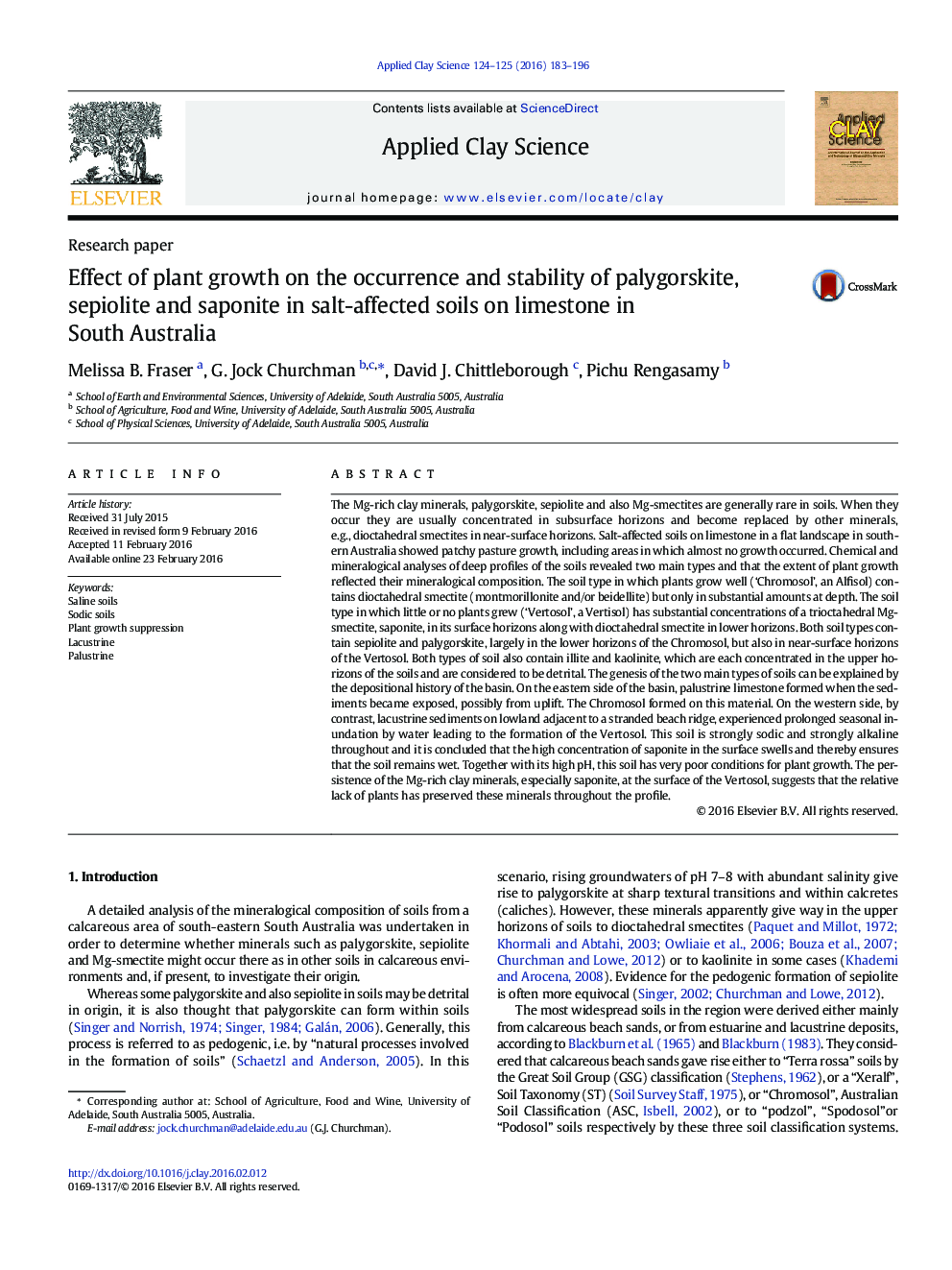| کد مقاله | کد نشریه | سال انتشار | مقاله انگلیسی | نسخه تمام متن |
|---|---|---|---|---|
| 1694097 | 1519060 | 2016 | 14 صفحه PDF | دانلود رایگان |
عنوان انگلیسی مقاله ISI
Effect of plant growth on the occurrence and stability of palygorskite, sepiolite and saponite in salt-affected soils on limestone in South Australia
ترجمه فارسی عنوان
اثر رشد گیاه بر وقوع و پایداری لیگورسکتی، سپئولیوت و سابونیت در خاک های تحت تاثیر نمک بر سنگ آهک در جنوب استرالیا
دانلود مقاله + سفارش ترجمه
دانلود مقاله ISI انگلیسی
رایگان برای ایرانیان
کلمات کلیدی
خاک های شور، خاکهای سدیم، سرکوب رشد گیاهان، دریاچه پلستروین،
موضوعات مرتبط
مهندسی و علوم پایه
علوم زمین و سیارات
ژئوشیمی و پترولوژی
چکیده انگلیسی
The Mg-rich clay minerals, palygorskite, sepiolite and also Mg-smectites are generally rare in soils. When they occur they are usually concentrated in subsurface horizons and become replaced by other minerals, e.g., dioctahedral smectites in near-surface horizons. Salt-affected soils on limestone in a flat landscape in southern Australia showed patchy pasture growth, including areas in which almost no growth occurred. Chemical and mineralogical analyses of deep profiles of the soils revealed two main types and that the extent of plant growth reflected their mineralogical composition. The soil type in which plants grow well ('Chromosol', an Alfisol) contains dioctahedral smectite (montmorillonite and/or beidellite) but only in substantial amounts at depth. The soil type in which little or no plants grew ('Vertosol', a Vertisol) has substantial concentrations of a trioctahedral Mg-smectite, saponite, in its surface horizons along with dioctahedral smectite in lower horizons. Both soil types contain sepiolite and palygorskite, largely in the lower horizons of the Chromosol, but also in near-surface horizons of the Vertosol. Both types of soil also contain illite and kaolinite, which are each concentrated in the upper horizons of the soils and are considered to be detrital. The genesis of the two main types of soils can be explained by the depositional history of the basin. On the eastern side of the basin, palustrine limestone formed when the sediments became exposed, possibly from uplift. The Chromosol formed on this material. On the western side, by contrast, lacustrine sediments on lowland adjacent to a stranded beach ridge, experienced prolonged seasonal inundation by water leading to the formation of the Vertosol. This soil is strongly sodic and strongly alkaline throughout and it is concluded that the high concentration of saponite in the surface swells and thereby ensures that the soil remains wet. Together with its high pH, this soil has very poor conditions for plant growth. The persistence of the Mg-rich clay minerals, especially saponite, at the surface of the Vertosol, suggests that the relative lack of plants has preserved these minerals throughout the profile.
ناشر
Database: Elsevier - ScienceDirect (ساینس دایرکت)
Journal: Applied Clay Science - Volumes 124â125, May 2016, Pages 183-196
Journal: Applied Clay Science - Volumes 124â125, May 2016, Pages 183-196
نویسندگان
Melissa B. Fraser, G. Jock Churchman, David J. Chittleborough, Pichu Rengasamy,
